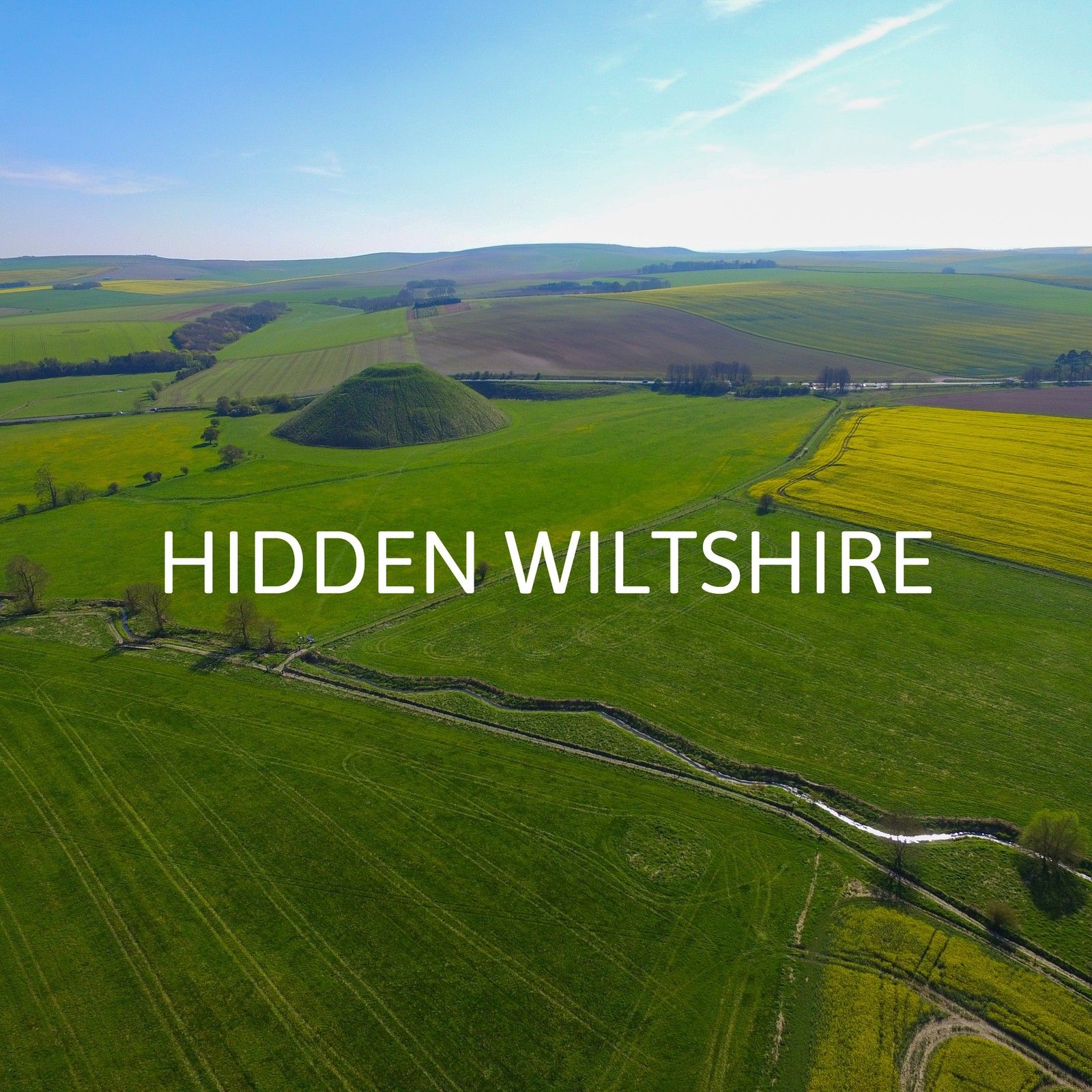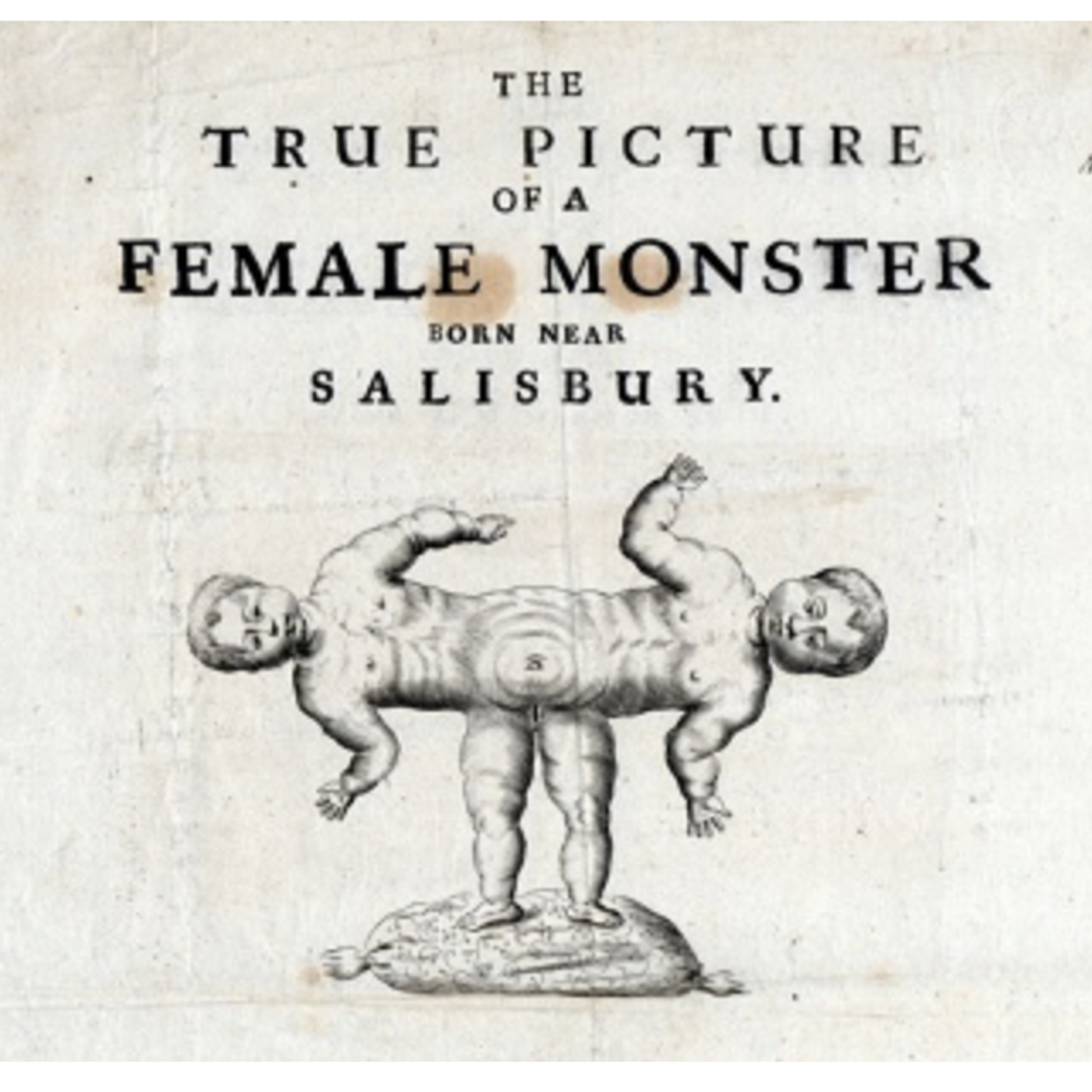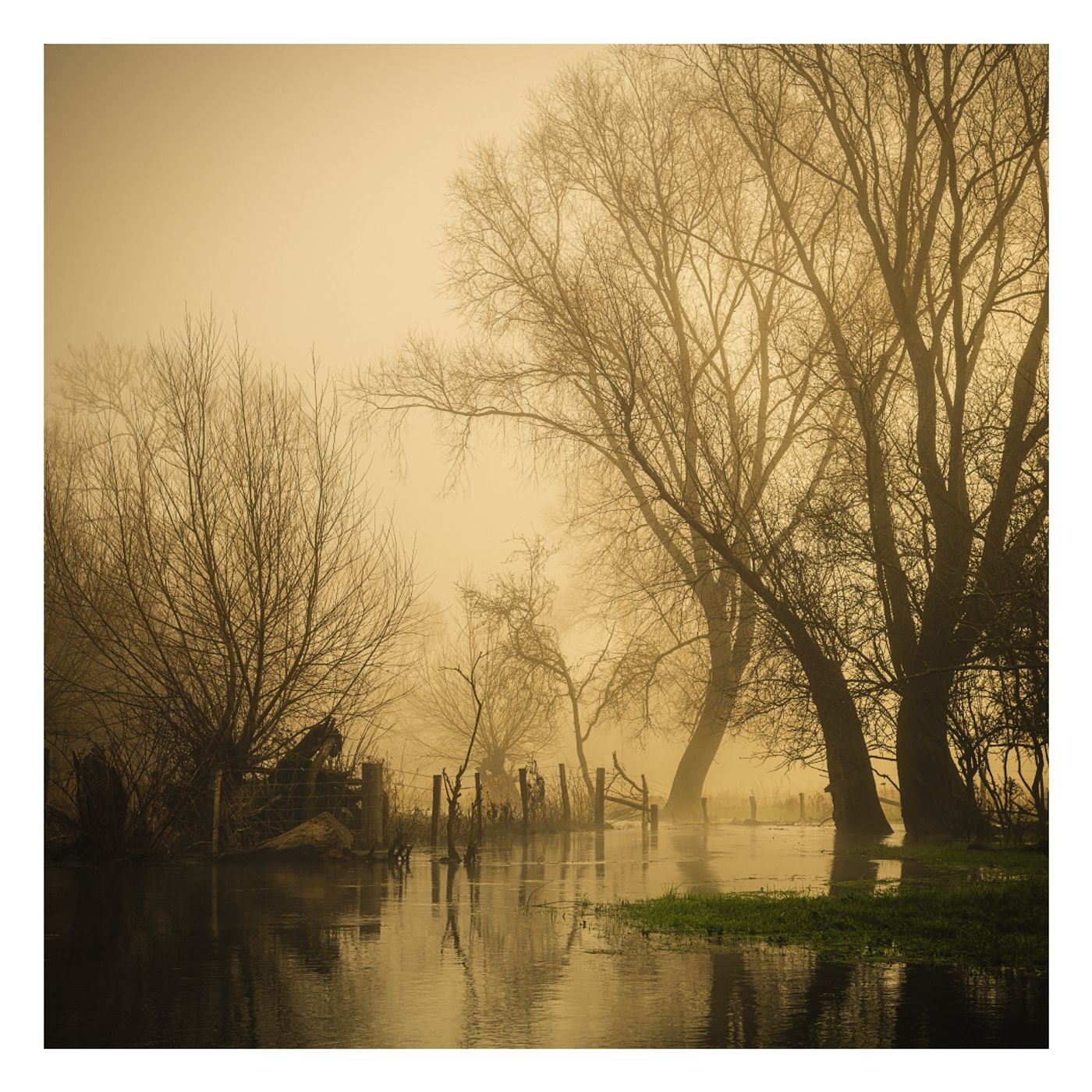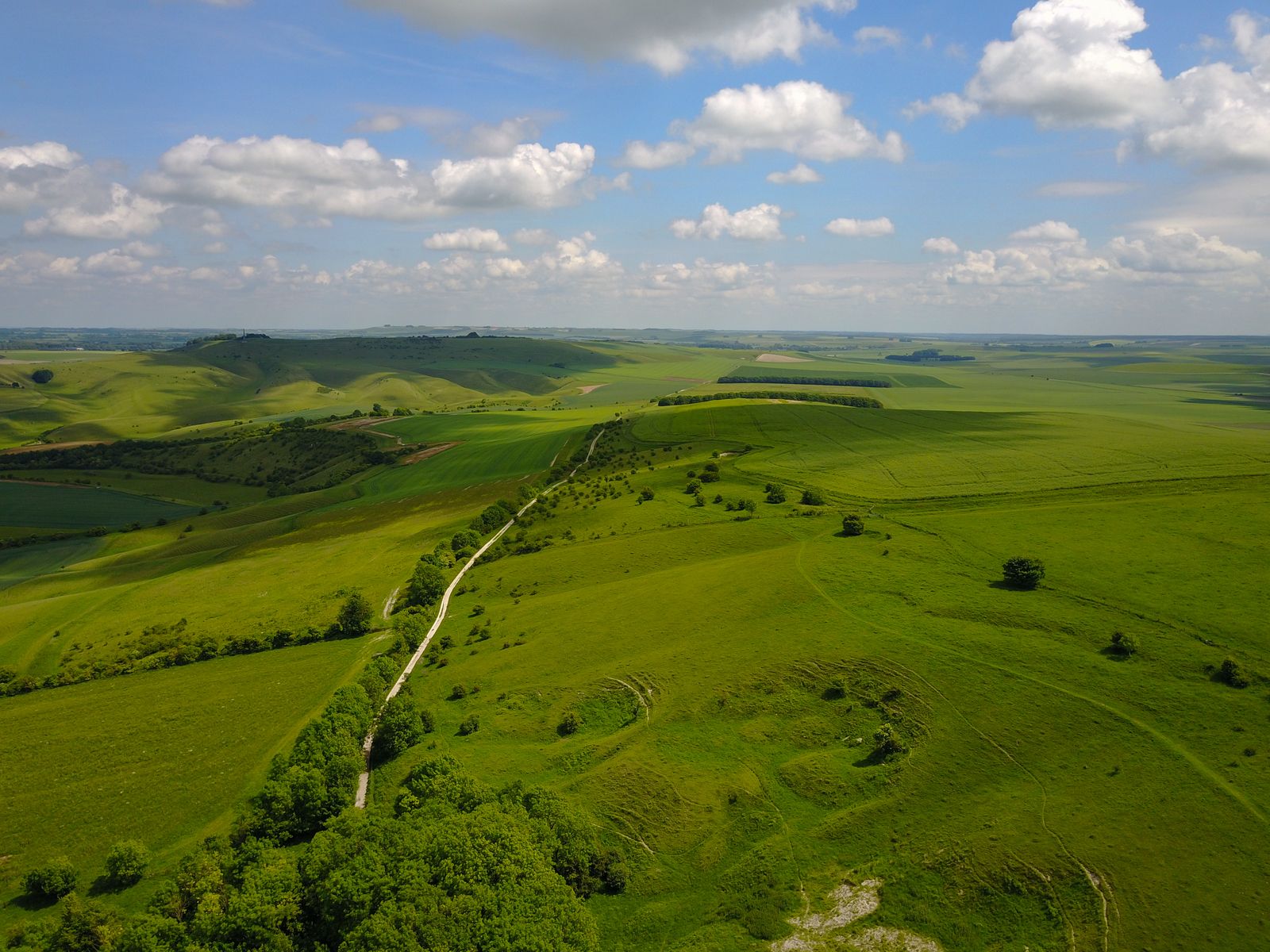Glyn, Elaine and Paul are back with another episode of the Hidden Wiltshire podcast, and once again have returned to record outside at a mystery location. You’ll have to listen to find out where we were. There are lots of links to things we discussed in this episode in these show notes.
Before we moved onto the main topic we had the usual run down on what we’ve been up to since the last podcast. And there was an awful lot to talk about so some of it was consigned to the cutting room floor!
Glyn led a Wiltshire Museum walk with David Dawson which was timed to enable a visit to Oare House whose gardens were open to the public for the day. They took in some of the scenes for paintings by Eric Ravilious who was invited to stay there in 1932. The walk took in Gopher Wood, one of the most stunning sites for bluebells in the county.
Glyn also ventured north, not to Yorkshire but to Royal Wootton Bassett to deliver his Wiltshire Blind House talk at the library.
Meanwhile Elaine has been as busy as ever and has posted a few new blogs on the website including one based on the border of Hampshire where she followed the Shire Rack footpath and discovered connections with Jack the Ripper! You can read her blog here:
The Borderlands, Shire Rack and Jack the Ripper
Elaine also touched the border of Dorset with a soggy but inspiring visit to Mere, a town worthy of an entire blog in itself. You can read about her visit on the Hidden Wiltshire Facebook page.
Glyn also finally wrote up his visit to another Wiltshire town, the beautiful and historic Malmesbury with tales of flying monks and tigers. You will find his blog on the website here
Malmesbury - St Aldhelm, King Athelstan and Eilmer the Flying Monk
Paul has only recently returned from his Spring residency in France (complete with wife who broke her ankle there) so had little to share that was Wiltshire related. However, it was interesting to discover that on Wiltshire Day, 5 June, the Thames Path National Trail tweeted a recommendation of Paul’s walk around Inglesham Church and the Thames Path which you will find in his blog on the website here
Medieval Inglesham - Three Counties Walk
Long term followers of Hidden Wiltshire may be familiar with the story of Alan Dodson who contacted us after our podcast about Imber, podcast number 2! Alan lived in Warminster for a few years as a child when his father was transferred here in the last war. Alan was trying to locate a cottage he used to visit somewhere on the Imber Range, long since demolished. Some people may be aware of the archaeological dig which is taking place at Imber at the moment led by Operation Nightingale, the veterans’ charity. Paul contacted them about Alan’s story and within a day or so two people both identified a possible location for the cottage. Paul has written to Alan to see if he thinks this is the place.
Finally in our round up we wanted to mention the work of some friends – Hedley Thorne (
Hedley Thorne), and Paul and Rebecca Whitewick (
Paul and Rebecca Whitewick). They are prolific bloggers, You Tubers and podcasters (
Wessex Ways) writing and filming about ancient trails, railways and canals amongst other things, much of it in Wiltshire. We share a common passion about rights of ways and in particular blocked or lost footpaths and bridleways. In the podcast we had an extended chat about this, particularly as both Elaine and Glyn have had walks thwarted by blocked rights of ways recently. We mentioned the tool that has been developed by The Ramblers called Don’t Lose Your Way which seeks to save lost paths before the Government closes the book forever in 2031 on any chance of having them reinstated. You can read about the tool here
Don't Lose Your Way.
We then began our discussion of some of our favourite woods in Wiltshire. Elaine chose the much loved Bentley Wood just to the south of Salisbury close to the border with Hampshire, a historic Royal hunting ground mentioned in the Domesday Book but which dates back even further. We mused over the origins of the name which Elaine subsequently established derives from the following – “the name Bentley comes from the Old English words beonet and leah, meaning "the clearing where bent grass grows". It was written in the past in various ways, such as Bentelwoda, and first recorded in the 13th century.” Elaine and Paul collaborated on a blog about Bentley which you will find here
Bentley Wood.
Elaine shared her love of Chase Woods, also down in the borderlands, this time with Dorset. Chase Wood is part of the Rushmore Estate. It’s a fantastic place for wildlife and in particular for birds. Elaine and Paul are recent converts to the Merlin phone app from Cornell Lab which is very effective at identifying birdsong.
Merlin
Next up was Paul and two of his favourite woods, or are they forests? Firstly we talked about Grovely Wood. Paul wrote a blog about it here
Grovely Wood and the Woodsman. Hardly hidden and well known to many but its huge scale and open access to much of it mean there are many hidden corners and opportunities to be completely alone. Its history dates back to the Romans and beyond, being the route for the Lead Road which enabled the Romans to transport lead from Mendip to the rest of southern England. It is also a place of great folklore and stories of murder and hauntings. The famous Witch Trees are to be found here and it is key to Great Wishford’s fabled Oak Apple Day which takes place each year on 29 May. We mentioned two books during our discussion -
Wildwood - Roger Deakin and
The House in the Woods - Mark Dawson. Grovely features in both.
Paul’s other favourite wood is Great Ridge, which is even bigger than Grovely! Sadly access is restricted to designated rights of way but that if anything adds to its mystery. Little has been written about it but you can read about Paul’s 2020 walk through the wood here
Great Ridge. It seems Wikipedia also struggled to find out anything about the wood as Paul’s blog is both referenced and a chunk quoted on its page about Great Ridge! However, the Lead Road also passes through here and later history features in W H Hudson’s marvellous book A Shepherd’s Life.
A Shepherd's Life - W H Hudson. Hudson was a great lover of Great Ridge and frequent visitor. There are again stories of mystery and folklore surrounding the wood. And the newly established
Stone Daisy Brewery located on the Fonthill Estate, owners of Great Ridge, have picked up on the significance of the wood naming one of its excellent beers Snail-creep Hanging after this bizarrely named location in the wood.
Finally Glyn talked about his favourites. Biss Wood is where Hidden Wiltshire began. Tipped off by someone about the simply stunning Autumn colours Glyn went for a walk in the wood in 2016. On a whim he put up his drone and was staggered by the rainbow of colours seen from above. His aerial photograph is now widely known and used, and features in both of the Hidden Wiltshire books. You can read about that first visit here
Biss Wood. Once just a meadow it was re-planted with trees in the 1940s/50s and is now managed by the Wiltshire Wildlife Trust.
Not far from Biss Wood is Clanger Wood and Picket Wood, south east of Trowbridge. Glyn’s blog about it can be found here -
Clanger Wood. Managed by the Woodland Trust these woods were once part of the ancient and vast Selwood Forest recorded in the Domesday Book. Little remains of Selwood but Clanger Wood is still large enough to find seclusion without becoming lost. It is listed as one of top 10 places in England for its display of bluebells, which may explain Glyn’s love of the place.
Finally Glyn wanted to add Southleigh Wood in view of its historical connections and its mystery. When King Alfred marched his troops to engage Guthrum and the Danes at the Battle of Ethandun (Eddington) in 878AD, the Saxon Chronicles say that Alfred assembled his men at Iley Oak the night before the battle. The location of Iley Oak is not known for sure but is thought to be in Southleigh Wood. The wood is now host to the mysterious and frankly creepy
Robin Hood's Bower, about which Glyn wrote in 2019. The bower consists of monkey puzzle trees planted by Lord Bath in 1965-67. Here will be found many votives and tokens together with wicker circles. It is clearly a place of relevance to some!
Then on to the wrap up for this episode:
There are still copies of the second Hidden Wiltshire book available on the website. The first book has sold out.
The aforementioned Hedley Thorne and another friend of the podcast, artist Anna Dillon, have an exhibition of aerial photographs and paintings entitled “Wessex Airscapes: Elevating Wiltshire” which opens at Wiltshire Museum in Devizes on 8 July 2023. As part of this Glyn will be leading some walks visiting some of the locations portrayed by Hedley and Anna
Wessex Airscapes: Elevating Wiltshire
Thanks as always go to Steve Dixon for the music. As usual the piece at the beginning and the end of the podcast is called “The Holloway”, whilst the piece in the middle is a new one from Steve entitled “Forgive”.
Other Links:
Glyn’s photographs can be seen on this website and on his Instagram feed
@coy_cloud
He is also very active on Twitter where his username is @Glyndle
Paul’s photography can be found on his website at
Paul Timlett Photography and on Instagram at
@tragicyclist
Steve Dixon’s sound art can be found on Soundcloud where his username is River and Rail
Steve Dixon River and Rail. His photographs can be found on Instagram at
@stevedixon_creative and his graphic design business website is at
Steve Dixon Creative
And finally you’ll find the Hidden Wiltshire online shop here
Hidden Wiltshire Shop and a link to Glyn’s blog about our latest book and how to purchase a copy here
Hidden Wiltshire from near and far


 45: Weird Wiltshire
Another location recording and once again it didn’t quite go to plan. The never
45: Weird Wiltshire
Another location recording and once again it didn’t quite go to plan. The never
 44: A Meander Along Some of Wiltshire’s Rivers
It only seemed like a few days since our last podcast recording – and that’s bec
44: A Meander Along Some of Wiltshire’s Rivers
It only seemed like a few days since our last podcast recording – and that’s bec
 42: Some of Wiltshire's Nature Reserves
We’re back. After a break of what feels like years, but may only be about five m
42: Some of Wiltshire's Nature Reserves
We’re back. After a break of what feels like years, but may only be about five m
Comments & Upvotes